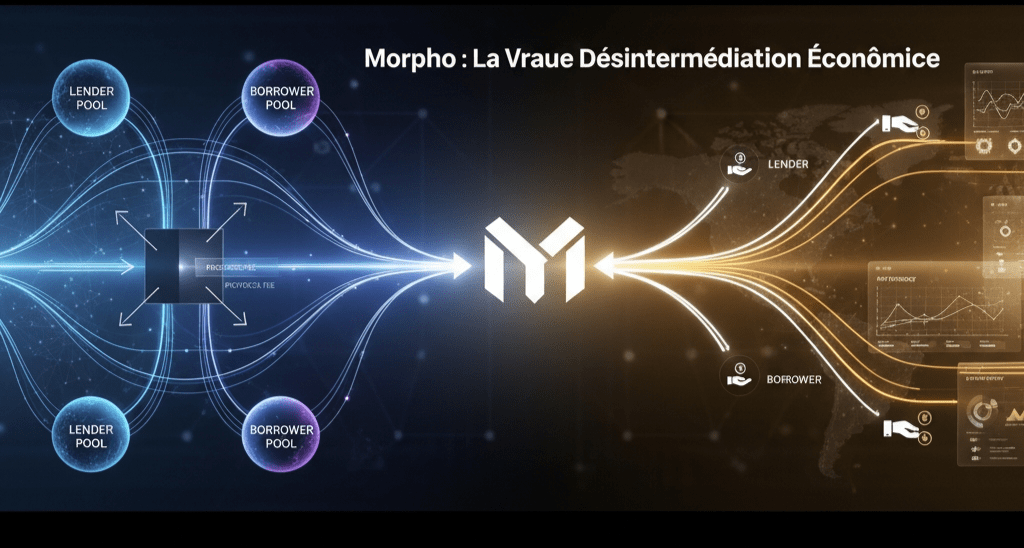@Morpho Labs 🦋 #morpho $MORPHO 
This friction, although less than in traditional finance, is an obstacle to the maximum efficiency of capital.
This is where Morpho comes in, not to revolutionize security, but to achieve the true economic revolution in DeFi.
The Architecture of Maximum Efficiency
Morpho is designed to realize the purely Peer-to-Peer (P2P) logic applied to credit.
While aggregated liquidity protocols act like a digital central bank, capturing a share of value between parties, Morpho positions itself as the technical catalyst, the matchmaker. It directly connects lenders and borrowers at the best possible rate.
Value no longer dilutes within the system; it is transferred directly.
The Legacy of Decentralization
The impact of Morpho goes beyond mere rate improvement. It embodies the original vision of Web3: a system where technology fades away to make room for frictionless value exchange.
For DeFi to demonstrate its irrefutable superiority over traditional finance, it must offer unmatched capital efficiency. Morpho is the technical answer to this demand, making the fairest and most efficient credit protocol the new standard.



